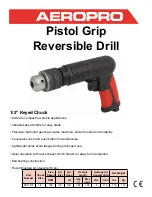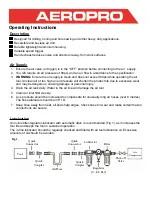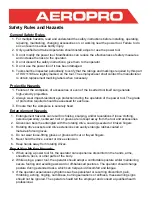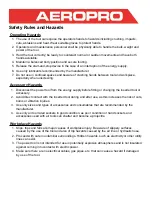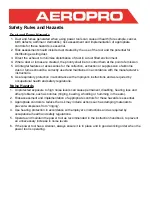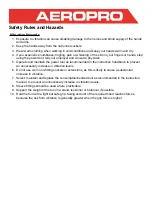
Dust and Fume Hazards
1.
Dust and fumes generated when using power tools can cause ill health (for example, cancer,
birth defects, asthma or dermatitis); risk assessment and implementation of appropriate
controls for these hazards is essential.
2.
Risk assessment should include dust created by the use of the tool and the potential for
distributing existing dust.
3.
Direct the exhaust to minimise disturbance of dust in a dust filled environment.
4.
Where dust or fumes are created, the priority shall be to control them at the point of emission.
5.
All integral features or accessories for the collection, extraction or suppression of airborne
dust or fumes should be correctly used and maintained in accordance with the manufacturer’s
instructions.
6.
Use respiratory protection in accordance with employer’s instructions and as required by
occupational health and safety regulations.
Safety Rules and Hazards
Noise Hazards
1.
Unprotected exposure to high noise levels can cause permanent, disabling, hearing loss and
other problems, such as tinnitus (ringing, buzzing, whistling or humming in the ears).
2.
Risk assessment and implementation of appropriate controls for these hazards is essential.
3.
Appropriate controls to reduce the risk may include actions such as damping materials to
prevent workpieces from “ringing”.
4.
Use hearing protection in accordance with employer’s instructions and as required by
occupational health and safety regulations.
5.
Operate and maintain the power tool as recommended in the instruction handbook, to prevent
an unnecessary increase in noise levels.
6.
If the power tool has a silencer, always ensure it is in place and in good working order when the
power tool is operating.

